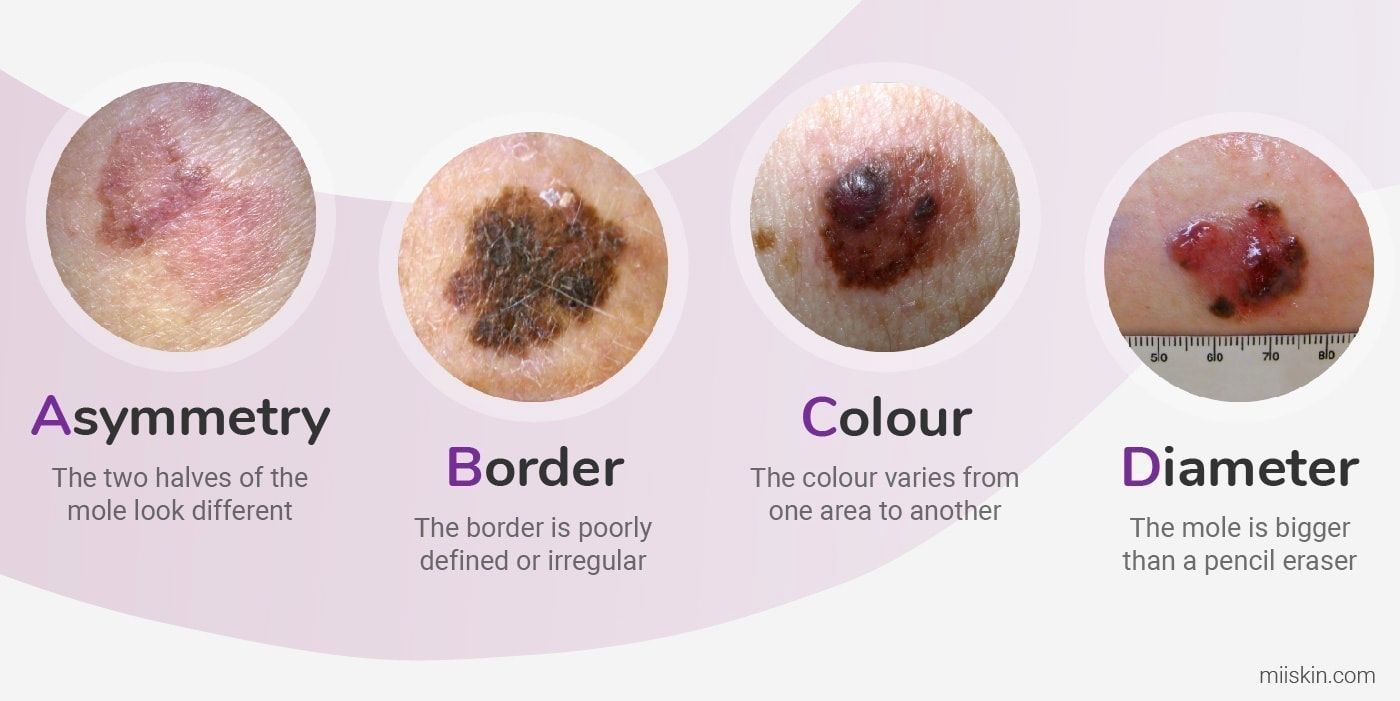Visual assessment of melanoma
Visual assessment of melanoma

Melanoma is a type of skin cancer that develops in the cells that produce melanin, which is the pigment that gives color to the skin, hair, and eyes. Melanoma can occur anywhere on the body but most commonly develops on areas that are exposed to the sun, such as the face, neck, arms, and legs.
Melanoma is usually curable if it is detected and treated early. However, if it is not diagnosed and treated in its early stages, melanoma can spread to other parts of the body and become life-threatening. Risk factors for melanoma include a history of sunburns, a family history of melanoma, having fair skin, and having a large number of moles or atypical moles.
The ABCDE criteria for melanoma :
Are a set of visual signs that can help identify suspicious moles or lesions that may be cancerous. The criteria are as follows:
A - Asymmetry: One half of the mole or lesion does not match the other half.
B - Border irregularity: The edges of the mole or lesion are not smooth, but rather uneven or notched.
C - Color variation: The mole or lesion has different colors or shades within it, such as brown, black, white, red, or blue.
D - Diameter: The mole or lesion is larger than 6 mm (about the size of a pencil eraser).
E - Evolving: The mole or lesion is changing in size, shape, or color.
The additional features that can help diagnose melanoma and are known as the 'CRETERA' criteria:
C - Color variegation: different colors or shades of the same color within the mole or lesion
R - Regular shape: the lesion should have a round or oval shape
E - Elevated: the lesion should be raised or elevated above the skin
T - Texture: the lesion should have an irregular texture or feel uneven to the touch
E - Enlarging: the mole or lesion is getting larger in size over time
R - Regression: part of the lesion is disappearing or fading away
A - Age: new lesions in people over 50 years of age are more suspicious for melanoma.
It's important to note that not all melanomas exhibit all of these signs, and some melanomas may not exhibit any of them.
The additional visual criteria for assessing the risk of melanoma include:
- The "ugly duckling sign": a lesion that is substantially different from the others in a patient with multiple pigmented lesions may represent melanoma. This sign has a sensitivity of up to 90% for melanoma.
- Palpable nodularity: this often corresponds with vertical growth of a melanoma and increases metastatic risk.
- Breslow depth: this is the distance from the epidermal granular cell layer to the deepest visible melanoma cells and is the most important prognostic indicator in malignant melanoma.
- Biopsy consideration: benign pigmented lesions are usually asymptomatic, and biopsy should be considered for moles that itch, bleed, or are associated with local sensory symptoms (e.g., tingling).



